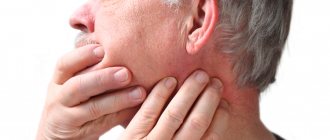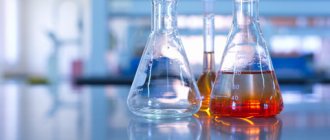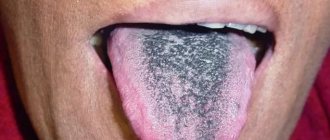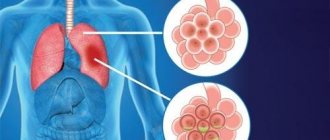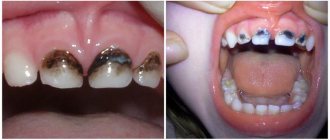Many people are familiar with the symptoms of muscle tension in the body. Sitting in front of a smartphone or monitor for too long - tight muscles in the back and neck hint that it would be nice to warm up. We decided to “take a walk” to the top floor or take our first jog of the season—the leg muscles immediately made themselves felt.
What if we tell you that right now, as you calmly read the article, the muscles in your face are also struggling with tension. They fight and can’t win. Surprised?
The face is a mirror of emotions
You are greeted by your clothes, seen off by your face... - this is how you can paraphrase a well-known proverb.
A quick glance at the clothes when meeting someone - and it becomes clear that this is a wealthy person, and when you look at his face - that he has much more worries than money.
A business card with gold embossing only indicates social status.
Subscribe to our INSTAGRAM account!
And the face is a screen of the state of the body. Physical ailments, level of self-esteem, quality of life are “written” on the face in the language of facial expressions, skin condition, and the shine of the eyes.
Emotions are energy
The face, more than other areas of the body, is involved in communication and expression of emotions. In the traditions of Chinese medicine and philosophy, it is customary to distinguish 5 basic emotional states .
These are anger, fear, joy, sadness and reflection.
Traditional medicine associates emotional manifestations with the activity of certain channels and organs.
Any violation of the expression of emotion - hypertrophied, restrained, inadequate to the external situation - helps in making a diagnosis and choosing treatment tactics.
For a doctor of Eastern schools, there are no isolated diagnoses of “neurosis” or “biliary dyskinesia,” but there is a complex disorder that covers the entire human being.
And expressing emotions is one of the ways energy circulates in the body.
The manifestation of emotions affects the state of the human muscular system and, first of all, facial expressions.
Fluid changes in facial expressions help you experience the emotion in full, realize and transform it, and convey your state to others.
In many cases, facial expressions are much more informative than words.
You can move to a different emotional mood without pretending only after changing your facial expression.
Relax old tensions and move on to new ones.
Residual tensions prevent you from entering new emotional states.
From the outside it looks like fatigue, gloominess, and unpreparedness to communicate.
A balanced facial muscle pattern is generally perceived as beautiful and appropriate.
The best publications in the Econet.ru Telegram channel. Subscribe!
Full participation of muscles in communication and emotional life and, importantly, their timely relaxation significantly affect the overall appearance of the face and skin condition.
Plastic, mobile muscles easily form the desired facial expression and just as easily relax for rest.
In this case, the face and neck maintain good tone, the intradermal fibers of the facial muscles constantly provide a light “massage” and maintain skin elasticity.
Types of hyperkinesis
There are various criteria that are used to classify pathology. Thanks to them, the following types of hyperkinesis can be distinguished:
- childhood forms - hyperkinesis up to one year, in the age category from one to five, during puberty;
- by type of occurrence - spontaneous, reflex (reaction to external phenomena), actional (provoked by a certain condition), induced (can be controlled by the patient);
- along the flow – constant (tremors) and episodic (tics);
- by speed of movement - fast and slow;
- by localization - hyperkinesis of the face, limbs, tongue;
- by origin - a distinction is made between primary (congenital) and secondary hyperkinesis acquired as a result of injury or taking medications.
Hyperkinesis in cerebral palsy in children begins to appear at the age of 1.5-2 years. Children with this pathology have difficulty coordinating their movements, which often look like pushing, jerking and twisting. Repetitive movements can be fast and rhythmic or, conversely, slow and erratic.
Hyperkinesis in cerebral palsy may be accompanied by swallowing disorders, speech delays and disorders, and lability of the emotional system.
What are facial muscles?
The facial muscles differ from other muscles of the body in that, starting from the bones of the facial skull, they are woven into the skin and thus have a movable attachment point not on the bones, but in the soft tissues.
Contraction of facial muscles causes skin displacement, the formation of folds and a rapid change of wrinkles in various combinations.
The facial muscles are relatively thin. They do not have dense membranes and are located directly under the skin in a layer of fatty tissue. Their strength is insignificant compared to other skeletal muscles.
Facial muscles are distributed unevenly on the face.
They are located in groups around natural openings - the mouth, eye sockets, nose, ears - and determine the shape and movements of the lips, nostrils, and eyelids.
In a newborn, the facial muscles are poorly developed; they develop gradually in the child with age.
Facial muscles are subject to nerve impulses coming from the brain along the facial nerve, and reflect a wide variety of human emotional states.
The contraction of each facial muscle causes a specific fold on the face that corresponds to it.
However, a single contraction of facial muscles is rarely observed; usually a whole group of facial muscles contracts together. on the numerous combinations of these abbreviations .
Relaxation of masticatory muscles - exercises
First, I will describe the exercise in text. Who likes videos - scroll down right away, I show everything there



